Decarbonization
The transportation sector, which includes all modes of travel through land, air, and sea to move people and goods, accounts for a third of all domestic greenhouse gas emissions. JMT works with these agencies and clients to design and implement solutions such as EV charging for transit, commercial and personal vehicles, also solar canopies and charging stations for electric bus systems, air emissions and air quality testing.

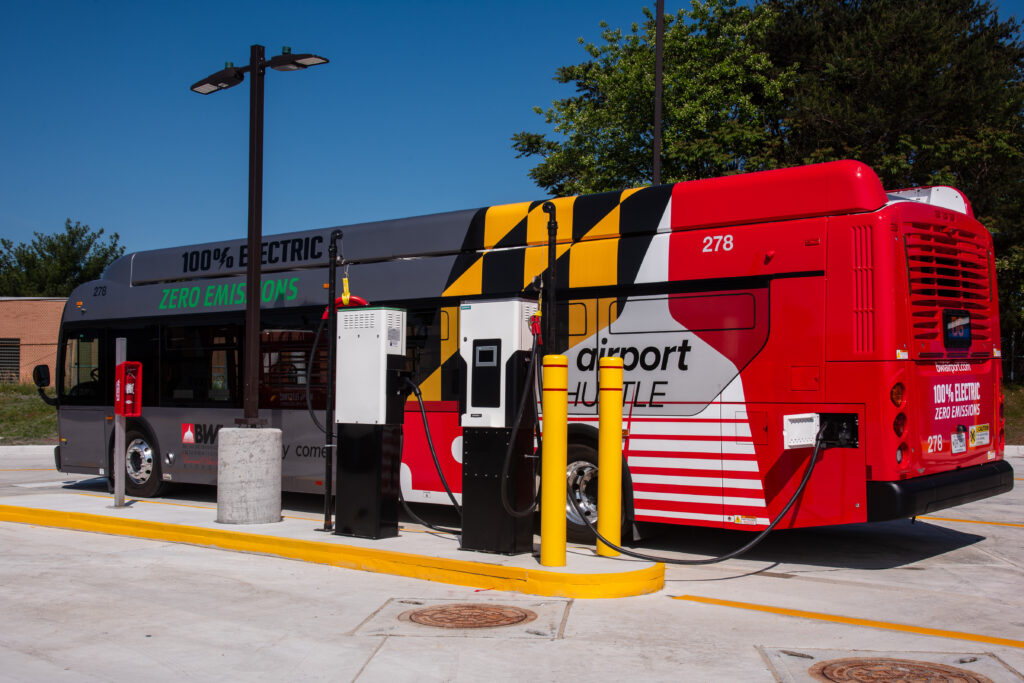
Powering the Future: Electric Bus Charging Stations at BWI
JMT provided Construction Management, on-site inspection , and commissioning services for the addition of charging stations for BWI’s new fleet of electric buses.
Location: Baltimore Washington International Airport
The work under this contract included erosion and sediment controls, chain-link fence removal, concrete curb removal, fire hydrant removal, full depth asphalt pavement reclamation, concrete pavement installation, installation of Owner provided bus charging stations and associated infrastructure including electrical duct banks, electrical switchboard, and transformers, installation of prefabricated building, installation of security cameras and site lighting.
As an agent for BWI, JMT managed the construction of the facility and charging stations. JMT coordinated with contractors and suppliers to ensure the facility was constructed per plan and specifications. JMT had a team of inspectors that would watch over the construction and complete daily report logs. Once construction was complete and prior to turn-over to BWI, the new facility and charging equipment had to be commissioned. JMT’s electrical engineering group commissioned two systems. The first system has five single port dispensers and one dual port dispenser. The single dispenser chargers from this system are rated at 150kW with a 480V, 246 Amp input. The second system has five single dispensers and seven overhead pantograph chargers. The single dispenser chargers from this system and the pantograph chargers are rated at 200kW with a 480V, 260 Amp input.
Sustainable Design Excellence: Bear Administration Building by JMT
JMT provided architecture, engineering, and surveying for a new LEED® Silver office building.
Location: Bear, DE
Client: Owner – Delaware Department of Transportation
JMT Architecture designed the new 24,000 SF administration building for DelDOT’s Canal District to replace a 1960’s era office building. The new office building consolidates administrative functions that were previously separated on the Bear Yard site, and provides DelDOT a modernized office space environment to house their District Maintenance, Right of Way, Public Works, and Statewide Support Services. A new 100- person training facility is also included in the headquarters.
The building was designed to LEED- Silver standards, with a focus on increased energy efficiency, high performance building envelope, optimized daylighting and views for building occupants with decreased maintenance needs. JMT provided architecture, interior design, MEP engineering, surveying, and civil engineering.
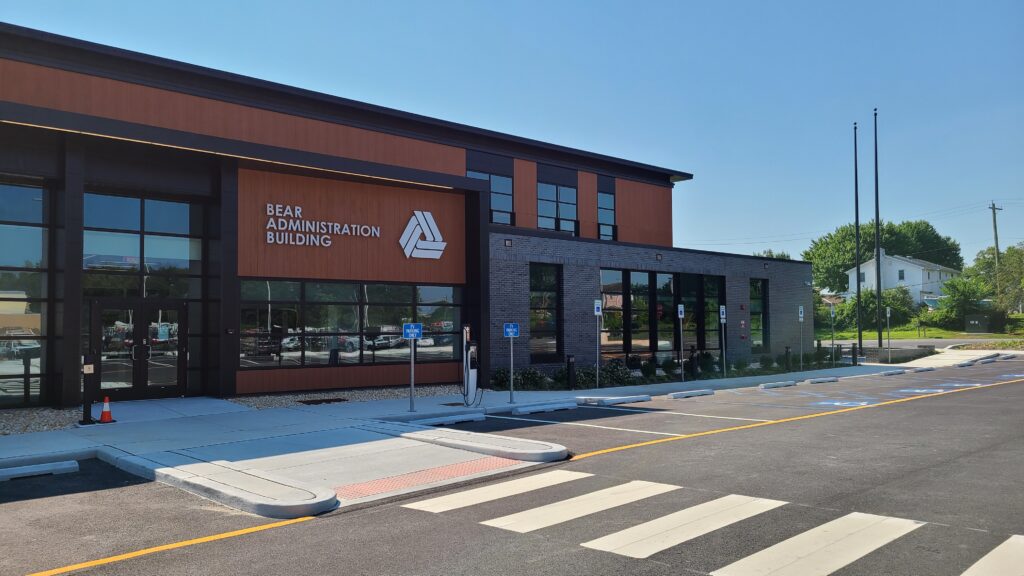
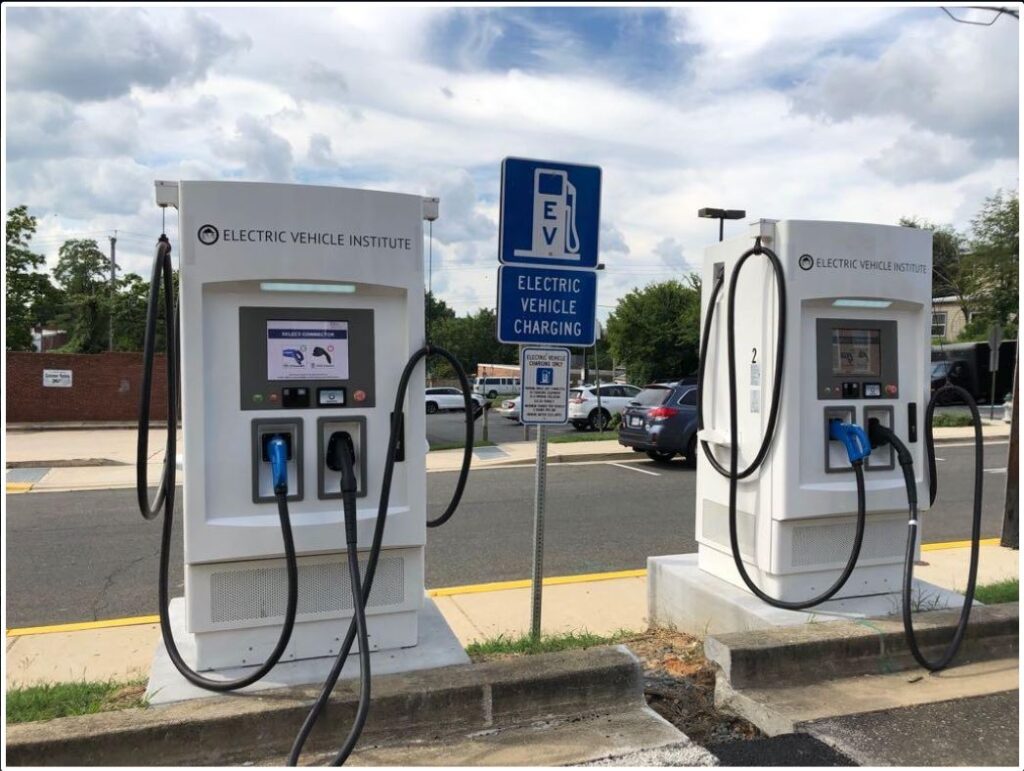
Charging Ahead: Feasibility Studies for EV Stations by JMT
JMT prepared a feasibility study and design for the installation of EV charging stations at various Maryland Transportation Authority toll locations.
Location: Newburg, MD
Client: Maryland Transportation Authority
Electric Vehicle Charging Stations Level 1 (120V), Level 2 (240V) (208V), and Level 3 (480V) were evaluated for installation at the following locations:
- Point Breeze Office Complex
- Chesapeake House Travel Plaza
- Ft. McHenry Tunnel EZ Pass Stop-In Center
- Baltimore Harbor Tunnel EZ Pass Stop-In Center
- Maryland House Travel Plaza
Within each level, there were various manufacturers and features available including different amperages. Level 1 charging generally provides 4 miles, per hour of charge; Level 2 provides about 25 miles, per hour of charge; and Level 3 provides around 100 miles, per hour of charge. Dual charging stations were proposed for two locations to accommodate four parking spaces. The charging stations were designed to provide power to the vehicles through an SAE J1772 connector, which is the standard for most electric vehicles.
Driving Environmental Change: Solar PV Feasibility in New Jersey
JMT performed a solar electricity feasibility study throughout the PSE&G electric grid within NJ DOT rights-of-way.
Location: New Jersey PSE&G electric grid operating area
Client: Petra-Solar, Inc. via PSE&G
The Feasibility Study provided Petra Solar with several alternatives concerning the installation of solar panels along NJDOT Right-of-Way throughout the entire PSE&G electric grid. The study focused on several primary areas which included: 1) Canopy structures located in the median of interstate highways, 2) Canopy and ground mounted structures located in large infields and along the right-of-way of secondary highways also known as Land Service Highways, 3) NJDOT owned maintenance yards and or office building parking areas, 4) Ballasted ground mounted solar arrays in a DOT owned landfill, and 5) Solar panels attached to overhead or cantilever sign structures and noise walls. The study will be utilized to provide information to PSE&G and the BPU concerning future development of solar energy in the state of New Jersey along the NJDOT right-of-way.
JMT was responsible for determining where each location will tie into the grid and utilizes Petra-Solar panels which include an individual inverter converting the DC production of the panel into 120VAC. This helps reduce voltage drop when wiring panels together allowing for 3 phase power, which will then be transformed up to a higher utility voltage as required for each site.
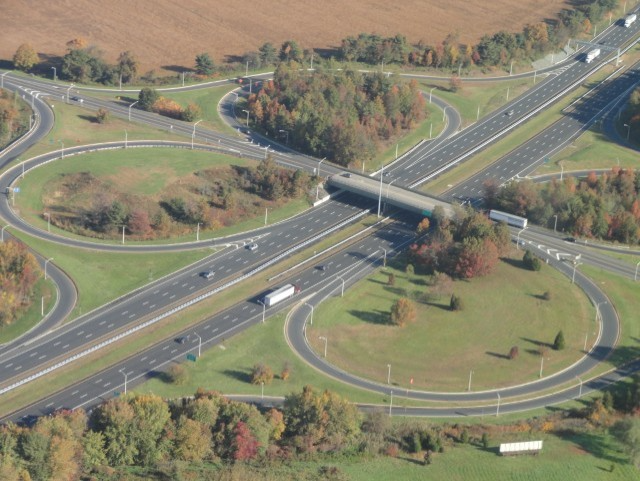
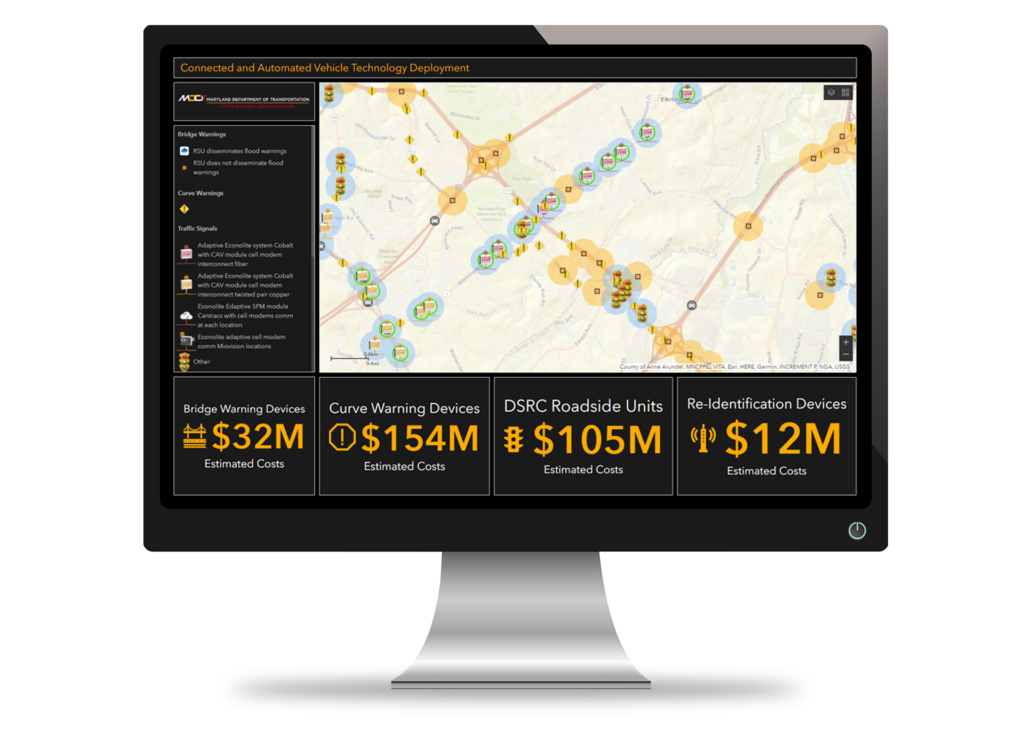
Greener Roads Ahead: Planning for Connected and Automated Vehicles
JMT developed the Connected and Automated Vehicle (CAV) Technology Deployment Dashboard illustrating potential locations for CAV-related technology, project phase, and associated costs.
Location: Maryland
Client: Maryland State Highway Administration
JMT is supporting SHA’s Innovative Performance Planning Division (IPPD) in researching emerging transportation technologies to assess impact on SHA’s services and programs, and assist with developing and implementing strategies, policies and programs that leverage these new technologies.
JMT reviewed research and white papers and provided briefings on emerging topics related to CAVs. Topics ranged from the potential impact of CAVs on land use, to possible applications of CAV-generated big data for planning and performance assessments. JMT also reviewed federal and state guidance on CAVs and provided comments for incorporation into State responses to regulatory agencies. JMT developed draft CAV reference and outreach materials for MDOT SHA, including a website for showcasing agency initiatives and accomplishments, an interactive Story Map summarizing CAV policies and activities across the US, and an outreach strategy for working with Metropolitan Planning Organizations (MPOs) to coordinate CAV activities in Maryland.
JMT created sample DSRC message sets for intersections along state roads and developed a survey form to inventory facilities that are available for CAV testing across the State. JMT is researching options for outfitting state fleets and state roads with CAV technology and preparing a Data Governance plan for CAV data. JMT also actively participates in the MDOT CAV Working Group, comprising public and private sector partners.
Reducing Emissions: Electrical Upgrades at Dundalk Marine Terminal
In a significant move towards sustainability, MPA Engineering partnered with JMT in preparation for upgrading the electrical system at Dundalk Marine Terminal, aiming to support electric vehicles and ship-to-shore power. This initiative is a crucial step in reducing diesel and greenhouse gas emissions and increasing energy efficiency.
Location: Dundalk, MD
Client: Maryland Port Administration (MPA)
JMT was tasked with conducting a comprehensive quality level B survey of above-ground electrical utility features. This involved a meticulous inspection of electrical system components and a thorough assessment of their condition. The project started with JMT validating MPA Engineering’s electrical asset data requirements, ensuring all necessary information was captured during the inspection and condition assessment. JMT mapped the above-ground electrical features using advanced surveying techniques and converted them into GIS format. The team configured Esri’s Field Maps application to facilitate the condition assessments. The JMT team collected and assessed over 2,700 electrical features at Dundalk Marine Terminal, MPA’s busiest terminal.
The final dataset will play a pivotal role in guiding decisions on maintaining existing electric utilities and determining optimal locations for new installations. This project supports enhancements to the terminal’s power infrastructure and underscores MPA’s commitment to strengthen environmental initiatives. JMT was responsible for determining where each location will tie into the grid and utilizes Petra-Solar panels which include an individual inverter converting the DC production of the panel into 120VAC. This helps reduce voltage drop when wiring panels together allowing for 3 phase power, which will then be transformed up to a higher utility voltage as required for each site.
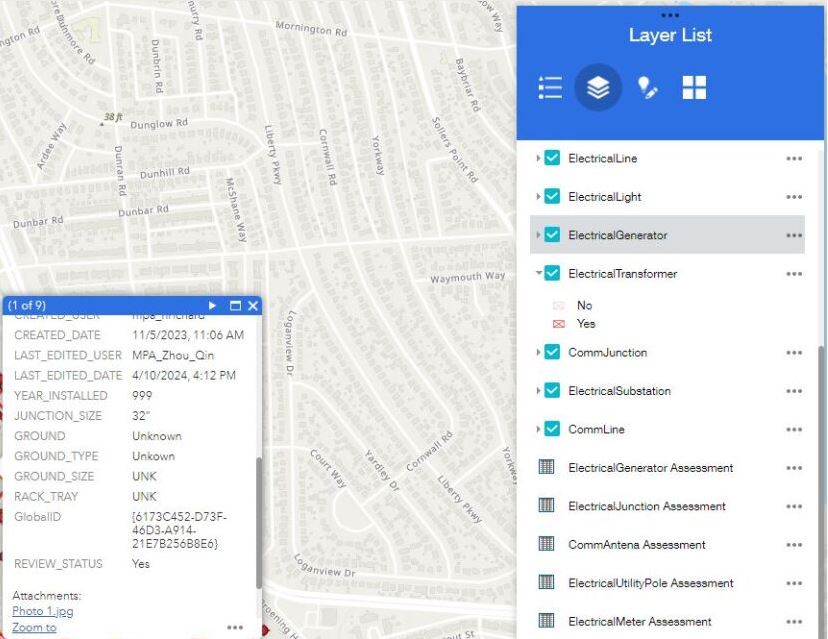
Decarbonization